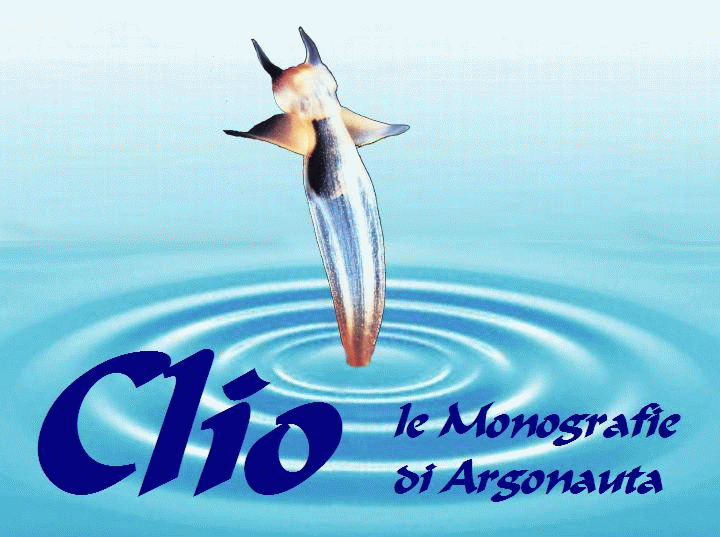
Clio supplemento a Argonauta n. 1-6 2012
 |
 |
|
La presenza dei "balani" fu riscontrata essenzialmente su esemplari maturi di Aporrhais, mentre i giovani ne risultavano privi. Le osservazioni dimostrano una spiccata tendenza al burrowing negli esemplari giovani, mentre gli adulti dal periodo primaverile a quello estivo dimostrano invece scarsa tendenza al burrowing. Alle stesse osservazioni sono riconducibili le esperienze di Perron (1978) sul A. occidentalis. Probabilmente esiste una qualche relazione tra il burrowing e la temperatura delle acque anche se nel caso del A. occidentalis dragato a 2000 metri di profondità, dove estremamente scarse sono le fluttuazioni termiche, tale possibile relazione sembrerebbe non sussistere (Rokop, 1974). In conclusione, come già accennato, non risulta completamente spiegato il significato del burrowing in questi esseri e probabilmente la mancanza di dati sui veri fattori ambientali che lo regolano non ci consente ancora di attribuire al fenomeno spiegazioni esaurienti. |
The presence of the "balani" organisms were found essentially on mature specimens of Aporrhais, while the juvenile ones had none.
The observations show a marked tendency to burrowing in the juvenile specimens, while the adults show a scarce tendency to burrowing during the spring to summer period. The experiences of Perron (1978) on A. occidentalis lead to some observations. There probably exists some relationship between burrowing and the temperature of the waters, even if in the case of A. occidentalis trawled at a depth of 2000 metres, where thermal fluctuations are extremely slight, such a possible relationship would not seem to apply (Rokop, 1974). In concIusion, as already mentioned, the significance of burrowing in these creatures is not fully explained, and probably the lack of data on the true enviromental factors which regulate it, do not allow us yet to attribute an exhaustive explanation of the phenomenon. |
Fig. 5 (by Yonge, 1937)
- Rappresentazione dell'animale nella posizione di completo burrowing. Le aperture inalante ed esalante sono indicate dalle frecce che mostrano la direzione delle correnti.
- Representation of the position of the animal when buried, from the righ side. The inhalant and exalent apertures are indicated by arrows showing the direction of currents.
- Representation of the position of the animal when buried, from the righ side. The inhalant and exalent apertures are indicated by arrows showing the direction of currents.
Habits and Habitat
|
Barnes & Bagenal (1952 : 101-105) hanno esaminato e descritto interessanti abitudini ed habitat di A.pespelecani con riferimenti comportamentali a colonie incrostanti del genere Balanus, evidenziando anche differenze di abitudini con A. serresiana. Nel quadro di queste osservazioni appare interessante segnalare le diverse profondità degli esemplari raccolti in relazioni alle citazioni bibliografiche esistenti. In ogni caso, risulta significativa la presenza dei rappresentanti di questa famiglia, che dimostrano un adattamento assai variabile, nelle diverse profondità di rinvenimento. Aporrhais pespelecani evidenzia una forte variabilità nella sua distribuzione verticale. Infatti, se è facilmente reperibile in acque relativamente basse è altresì vero che è stato reperito in acque particolarmente profonde dell’Atlantico a – 140 mt. al largo delle Shetlands (UK), ( AP.01.86, AP.01.88-89-91). Analogo reperimento deve essere segnalato per A. serresiana raccolto a maggiore profondità dell’A. pespelecani e precisamente a - 306 mt. nelle acque della Scozia settentrionale.( AP.02.89-90), ( De Donder, 2011 in litteram) Inoltre, anche A. occidentalis è stato raccolto a -366 mt. nelle acque del Canale di San Lorenzo(Canada), (Naidu, 1986 in litteram).
|
Barnes & Bagenal (1952: 101-105) examined and described interesting habits and habitats of A.pespelecani with references to behavioral encrusting colonies of the genus Balanus, also highlighting differences in habits with A. serresiana. As part of these observations it is interesting to note the different depths of the specimens collected in existing relationships with bibliographic citations. In any case, there is a significant presence of representatives of this family, showing an adaptation vary widely in different depths of discovery. Aporrhais pespelecani shows a strong variation in its vertical distribution. In fact it is easily found in relatively shallow water is also true that was found in deep waters of the Atlantic in particular - 140 meters. off the Shetlands (UK), (AP.01.86, AP.01.88-89-91). A similar finding has to be reported to the A. serresiana found at greater depths of A. pespelecani and precisely - 306 meters. In the waters of northern Scotland. (AP.02.89-90), (De Donder, 2011 in litteram) even A. occidentalis was collected at 366 mt. in the waters of the San Lorenzo Channel (Canada), (Naidu, 1986 in litteram).
|
